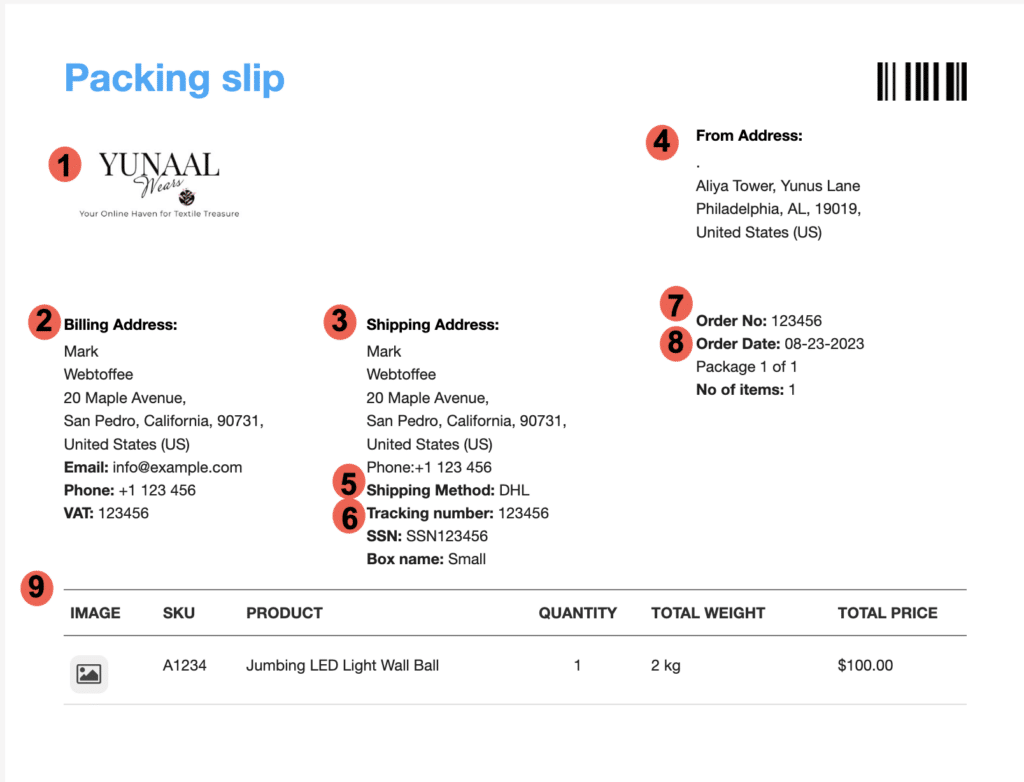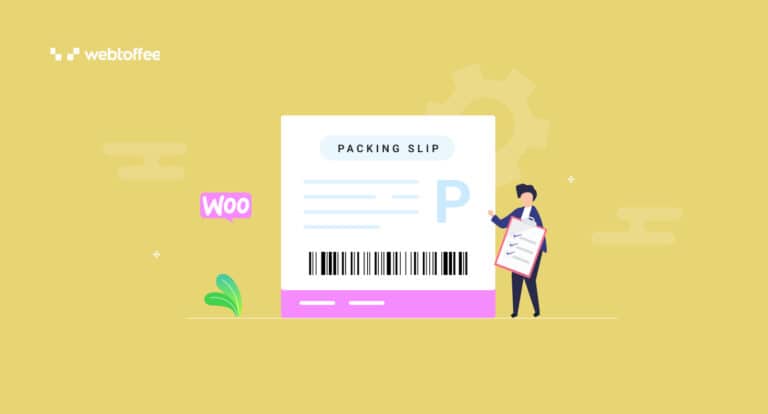A packing slip holds significant importance in the world of shipping and logistics. It serves as a document that verifies the accurate delivery of an order to its intended recipient.
In this era where eCommerce has taken over the market, the need for a comprehensive document with all the order details has become paramount. This record plays a major role in organizing the processes of dispatch, transportation, and final delivery, ensuring seamless coordination throughout the supply chain.
This blog post dives into the details of packing slips. Whether you are new to this term or an eCommerce owner, at the end of this blog, you’ll be familiarized with the term packing slip, how it is used, and what its essential components are.
A packing slip is normally a piece of paper that tells customers what’s inside their package. It has a list of everything in the package. A packing slip clearly mentions the content inside the box, including what the products are, the quantity of each product, and the weight of these products.
The seller prints the packing slip and puts it inside the package or sticks it outside in a pouch. The person getting the package can use it to check if everything they ordered has been delivered.
A good packing slip has all the information needed to make sure the package is right and easy to follow. Different businesses might have different details, but there are some mandatory details to be listed on a packing slip. Let’s talk about the important components of a packing slip:

1- Logo: The company logo adds a professional touch to the packing slip and helps with brand recognition.
2- Billing Address: This is the address associated with the person or organization that placed the order and will be billed for it.
3- Shipping Address: The destination address where the package is to be delivered.
4- From Address: The address of the sender or the company fulfilling the order.
These addresses help in tracking the delivery properly. Even though the shipping label on the box provides these details, a packing slip is kind of a backup plan.
5- Shipping Method: The chosen shipping method or carrier used to deliver the package.
6- Tracking Number: A unique identifier assigned by the shipping carrier that allows both the sender and recipient to track the package’s location and delivery status.
7- Order Number: A unique identifier assigned to the order that will help with referencing and organizing orders.
8- Order Date: The date on which the order was placed.
9- Product Table: This includes details like SKU, Product name, quantity, total weight, price, and more.
People often get mixed up between packing slips and invoices, but they’re not the same. Even though they might look alike, they have different roles. Let’s clear that up.
| PACKING SLIPS | INVOICES |
| Shipment documents with details of the list of products bought and delivered | Billing documents of the products or services purchased |
| Payment related details are not mandatory | Includes payment terms, payment method, and cost of each product ordered |
| Help make sure customers get everything they ordered and keep track of things in case something goes wrong | Conveying how much money the products cost |
| Important for the seller, the buyer, and the company delivering the products | Meant for the person who’s going to pay the money |
Shipping labels are another document that people mix up with packing slips. While a packing slip talks about the order, a shipping label is a note that provides the shipping details.
To be more specific, packing slips are mainly meant for the recipients, and shipping labels are meant for those responsible for delivering the products to customers, aka carriers.
The shipping labels mainly include the shipping information and the type of product (whether it is liquid, fragile, etc.) in order to ensure proper and safe delivery.
Shipping labels should be placed on the package; at the same time, a packing slip can be placed inside the package as well.
A packing slip has big benefits for both sellers and buyers. Here’s why:
Gets Orders Right: It makes sure the right things are sent to the right customers. Nobody likes missing items or the wrong products. Using a packing slip helps avoid mistakes and keeps customers happy.
Easy Returns: If something goes wrong, like a damaged item, a packing slip helps in easy return of the product. It also helps customers know if something is missing from their order. This speeds up returns and refunds.
Complex Orders Made Simple: Sometimes orders are complicated, with things from different places. Packing slips help keep everything organized, making it easier for both sellers and buyers to know what’s where.
In short, packing slips help avoid mistakes, make returns smoother, and manage tricky orders better.
To make your packing slip look custom-made for your store, consider adding a unique and captivating design that reflects your brand’s identity. Including your brand’s logo would make a packing slip look more professional. Customizing your slip in this way shows customers how much you care about every aspect of your business. There are several free websites and plugins available to help you achieve this.
Conclusion
Packing slips stand as an essential tool that bridges the gap between efficient operations and customer satisfaction. They carry significant weight, not just in terms of itemizing shipments but also in conveying a brand’s commitment to precision and care.
By understanding the crucial role packing slips play, tailoring them to align with your brand’s identity, and harnessing the power of technology, you can optimize your shipping processes, minimize errors, and enhance the overall customer experience.



